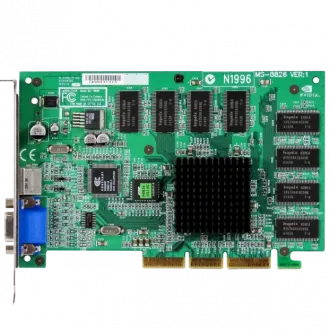The NVIDIA GeForce2 MX 400, released in the early 2000s, was a graphics card that played a significant role in the evolution of PC gaming during its time. As a successor to the original GeForce2 MX, it offered notable improvements in performance and graphical capabilities.
Performance and Specifications: The GeForce2 MX 400 featured a core clock speed of around 200 MHz and came equipped with 32MB of DDR SDRAM, which was considered a respectable amount of video memory at the time. While it was not a high-end graphics card, it was well-suited for mainstream gaming and multimedia tasks. It supported DirectX 7, making it compatible with a wide range of games and applications available during that era.
Graphics Capabilities: The card introduced several key features, including hardware-based transform and lighting (T&L), which improved 3D rendering performance. It also featured Nvidia's TwinView technology, allowing users to connect two monitors for enhanced productivity or gaming experiences. The GeForce2 MX 400 offered hardware DVD playback acceleration, improving video playback quality and performance for DVD movies.
Gaming and Multimedia: During its prime, the GeForce2 MX 400 was capable of running popular games of the time, such as "Quake III Arena," "Counter-Strike," and "Max Payne," at reasonable frame rates and quality settings. It provided hardware acceleration for 3D graphics, contributing to smoother and more immersive gaming experiences.
Legacy and Impact: The GeForce2 MX 400 was a budget-friendly graphics card that helped bridge the gap between integrated graphics and more expensive high-end graphics cards. Its affordability and compatibility made it a popular choice for users looking to upgrade their systems for gaming and multimedia purposes. While it has been largely surpassed by newer and more powerful GPUs, the GeForce2 MX 400 remains a nostalgic and historically significant graphics card in the evolution of PC gaming technology.
